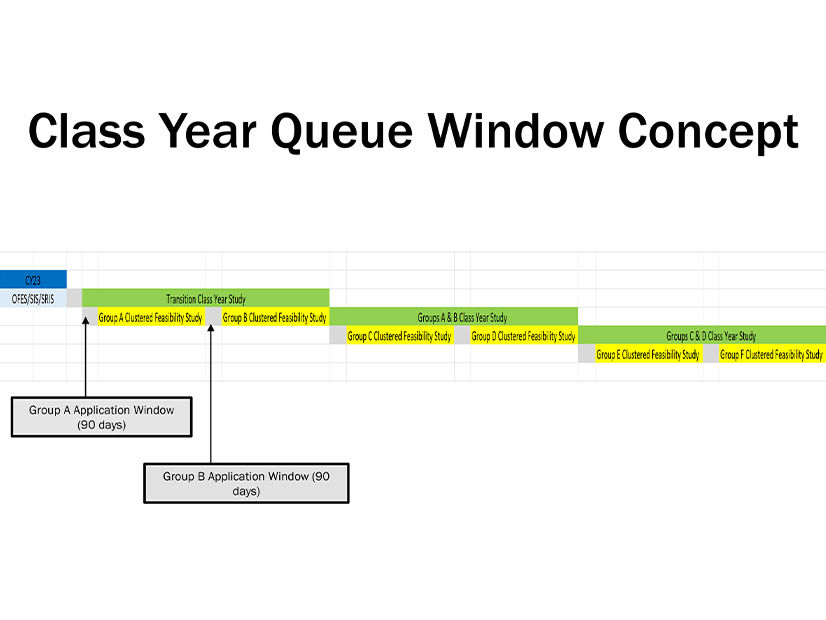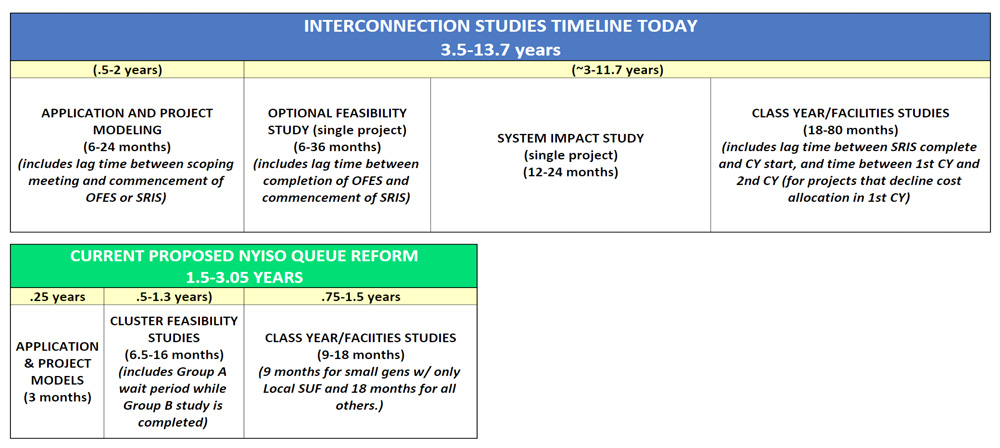ALBANY, N.Y. — NYISO on Thursday sought once again to clarify its Class Year queue window concept and assuage stakeholder concerns expressed in previous meetings about the proposed changes to the interconnection study process.
Thinh Nguyen, NYISO senior manager of interconnection projects, told members of the Transmission Planning Advisory Subcommittee that “we want to make sure that we’re reducing [interconnection] timelines and that this is an ongoing discussion amongst stakeholders.”
Stakeholders, however, remained skeptical and had many unresolved questions.
“We’ve been pointing out each time we have these meetings that we need a focused presentation on how much of our extra work translates into extra benefit,” said Mark Reeder, representing the Alliance for Clean Energy New York, referring to how the new construct would have developers complete many pre-application requirements before being able to join, which has caused confusion.
This comment was representative of the struggle stakeholders have expressed previously to NYISO, as the ISO has reworked the proposal throughout the year. (See NYISO’s Latest Queue Overhaul Draft Confuses Stakeholders.)
Stakeholders still wanted more clarity about many parts of the concept, including project prioritization and potential off-ramps for large generators.
Doreen Saia, an attorney with Greenberg Traurig, asked about project prioritization and whether Group A projects that finish their cluster feasibility studies could be impacted by the feasibility results of Group B projects.
“Group A projects have priority against Group B. So, when you add Group B into the Class Year study, if there’s a problem, then Group A has a much higher priority,” Nguyen responded.
“I am worried that you could inadvertently undervalue the whole [concept],” Saia followed up. “If Group A projects do great, but then Group B projects come out and it is an unholy mess, [developers] may now decide they aren’t willing to agree to new costs 90 days after their initial costs for Group A projects were determined.”
Reeder asked whether NYISO has begun considering allowing off-ramps for large-scale projects that want to withdraw from the queue after discovering they might be infeasible. NYISO currently allows only small generators to withdraw from the queue without penalty.
Nguyen responded, “This is still on the table, but we’re still going to have to think about that.” Nguyen added that NYISO is aware that there are many circumstances in which a large-scale generator may need to withdraw for valid reasons.
NYISO will refine the proposal until the fall, when it will begin vetting tariff language with TPAS. It asked that comments or questions be sent by July 21 so they can be incorporated into the next meeting presentation Aug. 1.

